Local Hive Honey Tea Pairing. This post has been sponsored by Local Hive™. All thoughts and opinions are my own.
I am a big tea drinker…like 6-8 cups daily. When I drink that many cups a day, it’s always herbal tea and always sweetened with honey. Long before I started collaborating with Local Hive™ that was my go to.
So, today we’re going to do something a little fun, a tea and honey pairing. I’m going to tell you the ones I tried and my suggestions for you to try. You can of course do your own tasting as well and I definitely encourage you to try that. Local Hive™ has 22 varietals (I’ll tell you more about that later) each with their own flavor profile, so mixing and tasting with tea, cocktails, cheeses, and other foods is highly encouraged. Most mass-produced honey you would get at the store in a bear bottle is blended and filtered and comes from anywhere in the world. It loses all sense of unique flavoring. So instead, do a flavor tasting with Local Hive™.
I also paired this fun tea pairing with a classic tea time treat, Honey Cakes! Check out that post for the recipe (coming 4-2-21).
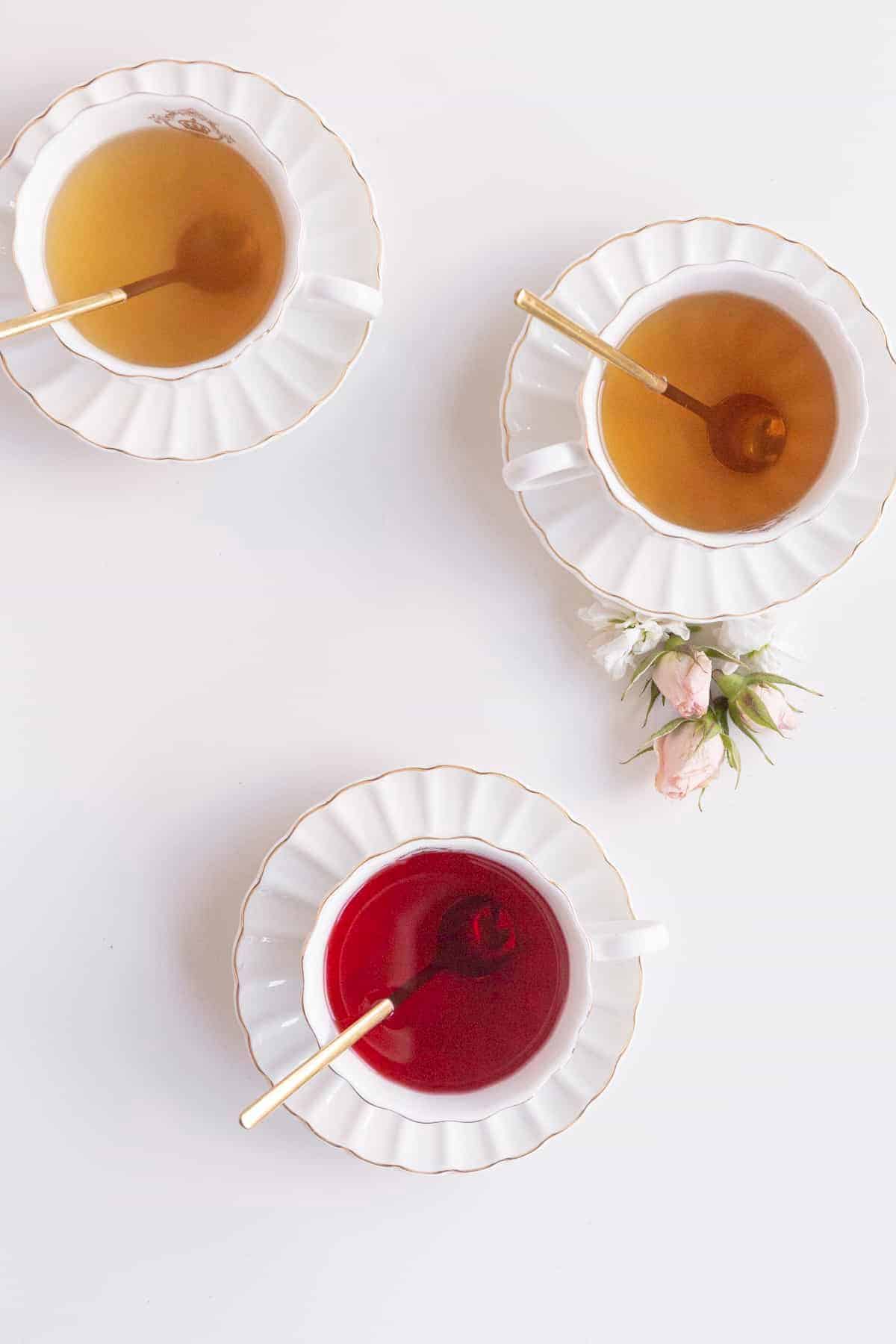
Table of Contents
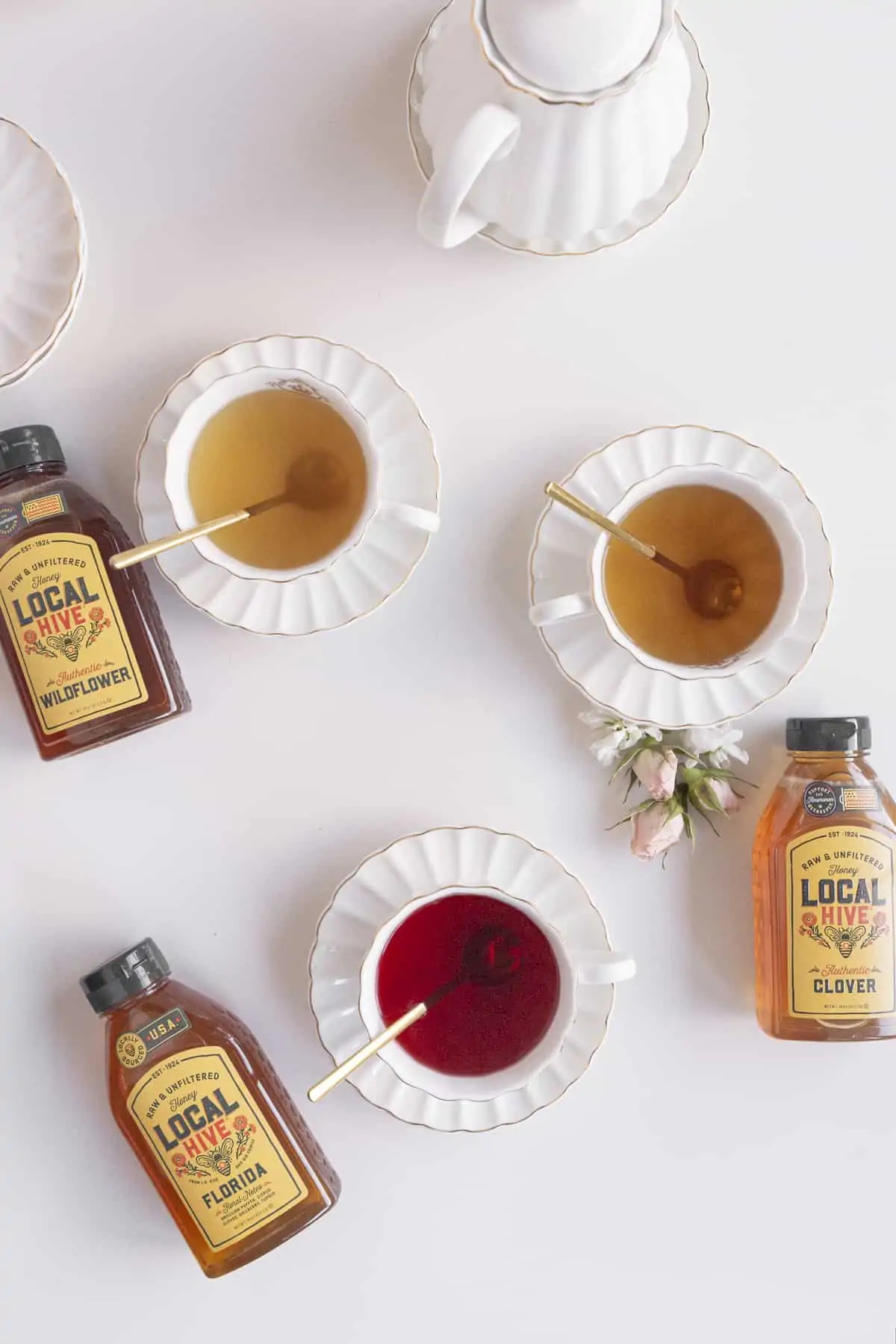
Local Honey
For this tea tasting we're using local honey. Local honey is honey from a specific region. Each area has a very specific and distinct flavor that comes from being raw and unfiltered. What does that mean? Well, raw honey means it hasn’t been heated above ~110°F. And unfiltered honey is honey that retains the pollens and enzymes. Leaving the honey unfiltered is how it retains flavor and how you’ll find so many variations in flavor across Local Hive™.
Across the different varietals, you can taste floral notes of citrus, fruits, plants, clover, wildflower, peppers, berries, buckwheat, sage, and so much more. Each region has its own unique flavor and color. Let’s talk about their varietals below.
Varietal Honey
Varietal honey is honey with specific & distinct local pollen sources. Each bottle of Local Hive™ features which notes can be found inside. Like I mentioned above, this can affect the flavor and color. This isn’t like the basic mass-produced honeys that all taste the same. Each varietal (flavor) has a unique flavor profile. I have my own personal favorites for different purposes.
If you want to read more about varietals, the differences in the tastes, and how many kinds of honey there are, you can read about that here: How Many Kinds of Honey are There?

Honey Tasting
Now, let’s get to the fun part! The honey tasting. I wanted to keep things floral and citrusy for spring. So, I tried the Wildflower, Clover, Florida, and Orange Blossom. You can read about each honey varietal on the website. Or you can order a handful and taste test them at home and see which you want to try with what.
Then I got out my favorite herbal teas to taste test: Chamomile, Chamomile and Lavender, Ginger, Hibiscus, Green Tea, and Blood Orange Rooibos. These herbal teas all are known for different medicinal purposes. You can read more about that here: 10 Healthy Herbal Teas You Should Try.
I tasted one type of tea at a time, each mug with a different honey. So, I boiled water in my kettle, then added my team to steep. I split my tea among 4 mugs. Each mug then got a different honey. And yes, I did make little labels on ripped-up pieces of notepad paper to make sure I could track. Then I taste-tested, taking small sips and only a few sips of each. Although none tasted particularly bad, there were some combinations that just made sense.
Let’s see who the winners were!
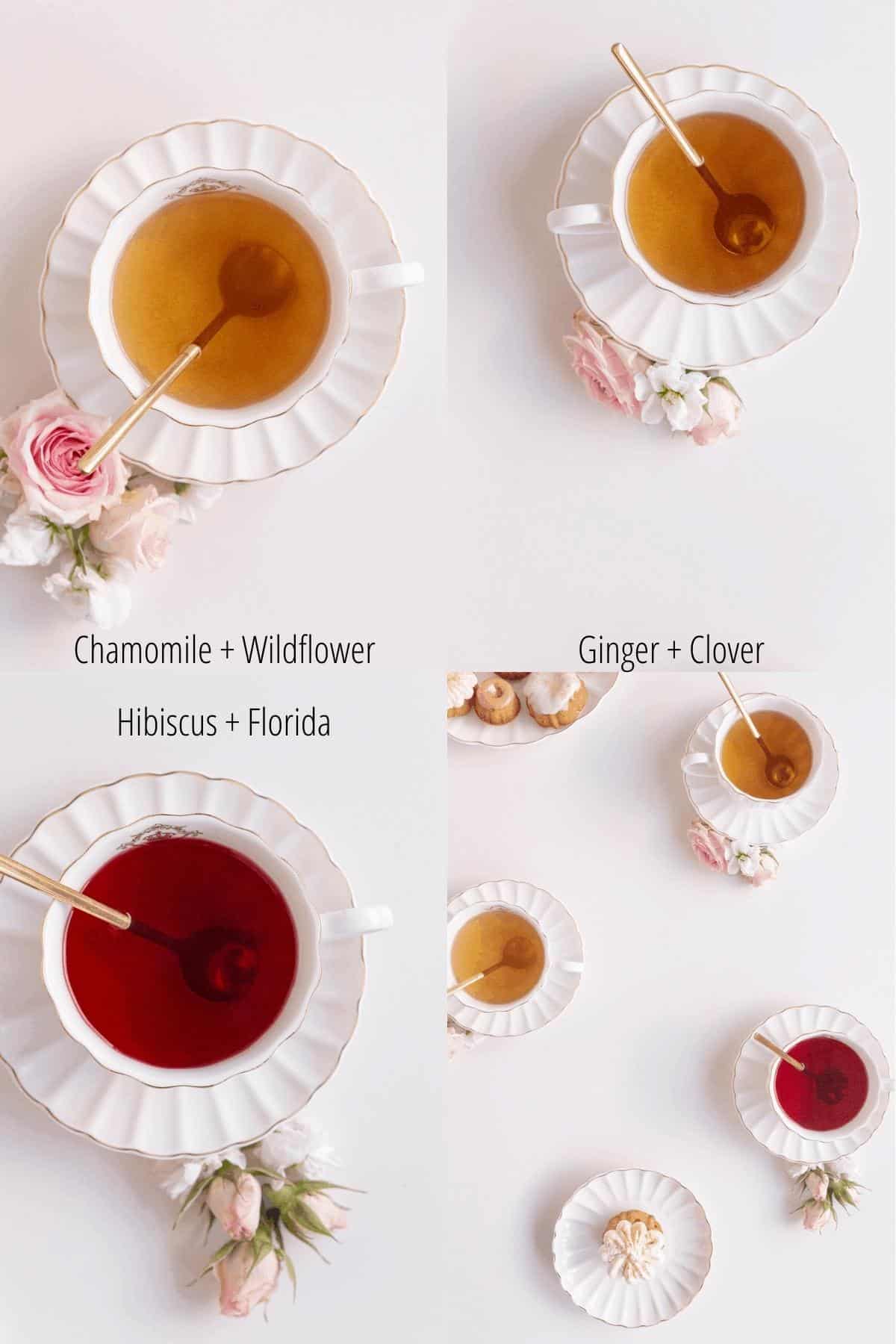
Hibiscus Tea with Honey
Hibiscus tea with Florida honey!
This pairing went so well together. Florida varietal has notes of Brazilian pepper, citrus, clover, gallberry, and tupelo. This pairing naturally makes sense since citrus and hibiscus go super well together. If you’ve ever had hibiscus cocktails they are usually paired with lemon or limes. Hibiscus is found in tropical or subtropical regions, where citrus also grows so well in tropical climates.
I normally drink my hibiscus tea cold and make it with simple syrup. But now that I’ve had it hot with honey, it just makes sense. I think I’ll also try to make a simple honey syrup with this for the summer for iced tea.
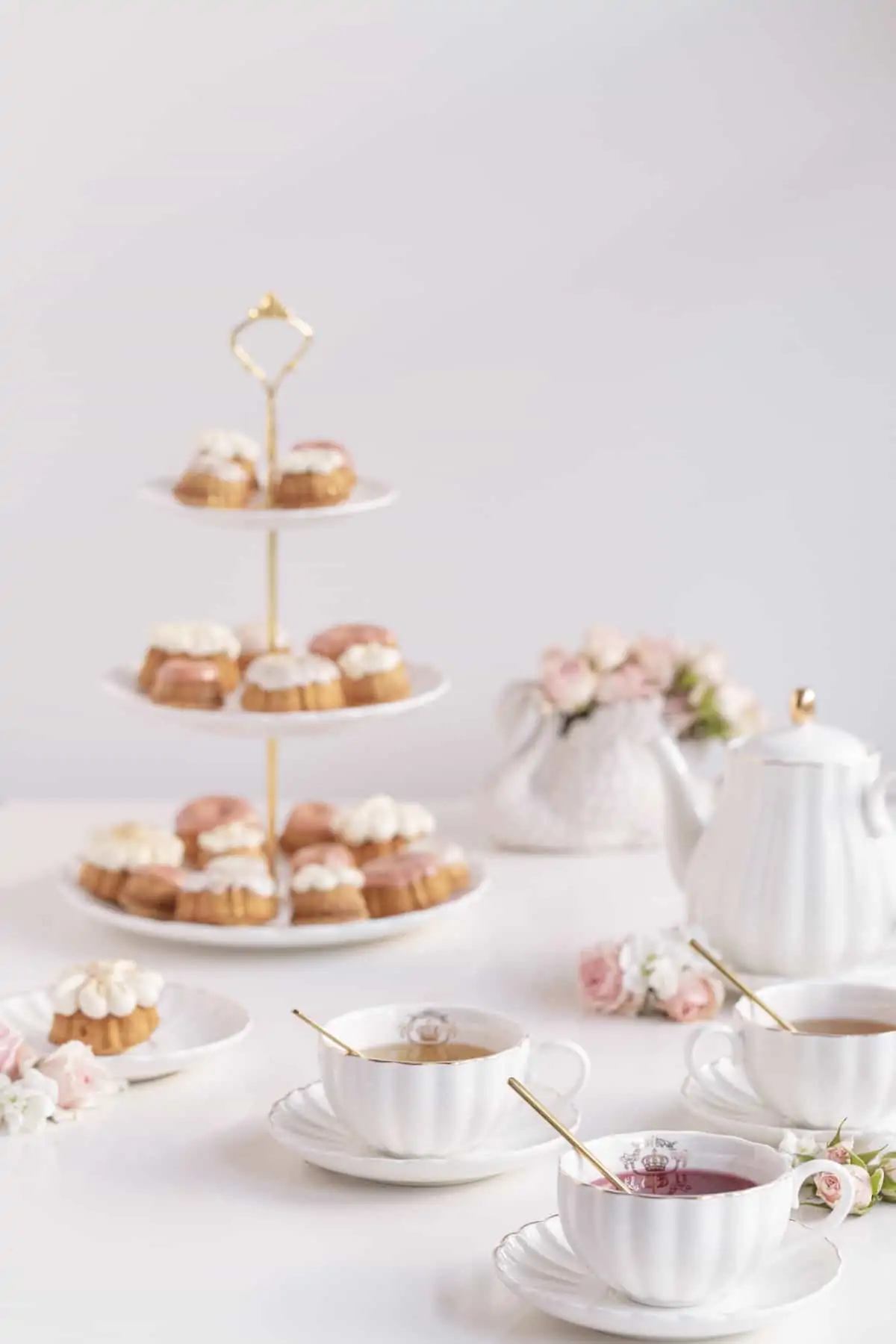
Chamomile Tea with Honey
Chamomile tea with Wildflower honey!
Okay, this one might seem obvious and it kind of was. Wildflower honey is from blooming wildflowers, which chamomile also is! Chamomile is a wildflower that grows in pastures, on the side of the road, and in more dry climates.
Although it isn’t native to the US, it’s now wild here and can be found across the states. So, it makes sense that it pairs well with the Wildflower honey…it may well be a part of what the bees are collecting from. Chamomile is actually known by gardeners as an attractor for bees with their sweet scent.
This honey is lighter and sweetness has notes of delicious florals. This honey also tastes wonderful with Chamomile Lavender tea.
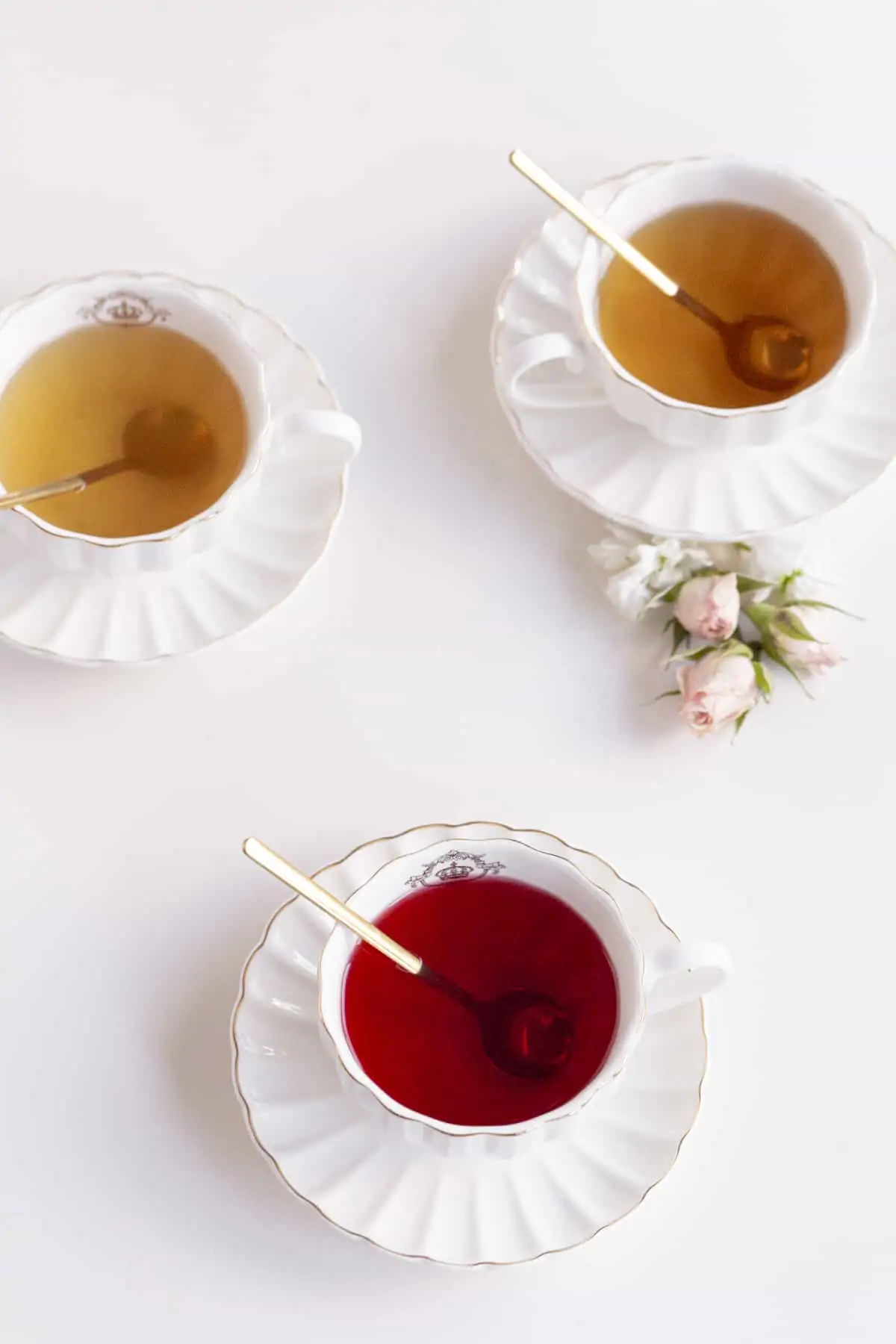
Ginger Tea with Honey
Ginger Tea with Clover honey!
This is my personal favorite pairing, so I already knew it would delicious together. Clover is a darker color and has a mild sweetness. Paired with the spicy ginger helps to tame the flavor a bit. Although clover can vary from region to region, Local Hive™ Clover honey has a very similar taste and comes from the same area. Test this one out and let me know your thoughts. It’s my favorite pairing. And ginger has so many medicinal purposes from calming stomachs to helping with acid reflux, it’s always a great option.
I also really enjoyed the other honeys in this tea. Another favorite honey varietal for ginger tea is the SoCal honey.
Well, I hope you taste test these honeys and do a tea pairing of your own. Let me know what you try and how it goes. I would love to know your thoughts in the comment section below!
Other Honey Posts
Love this Post?
Did you try this and just love it? Awesome! If you have a quick minute and could leave a comment below, I would appreciate the support and knowing your feedback! And if you’re over on Instagram, be sure to tag me in your photos!
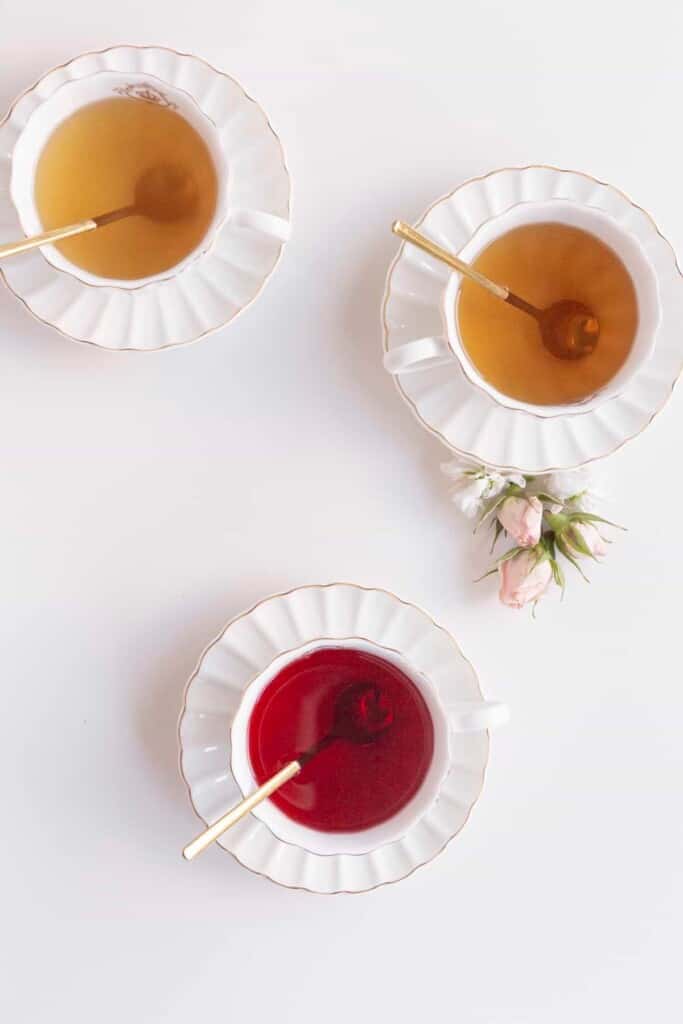
Leave a Reply